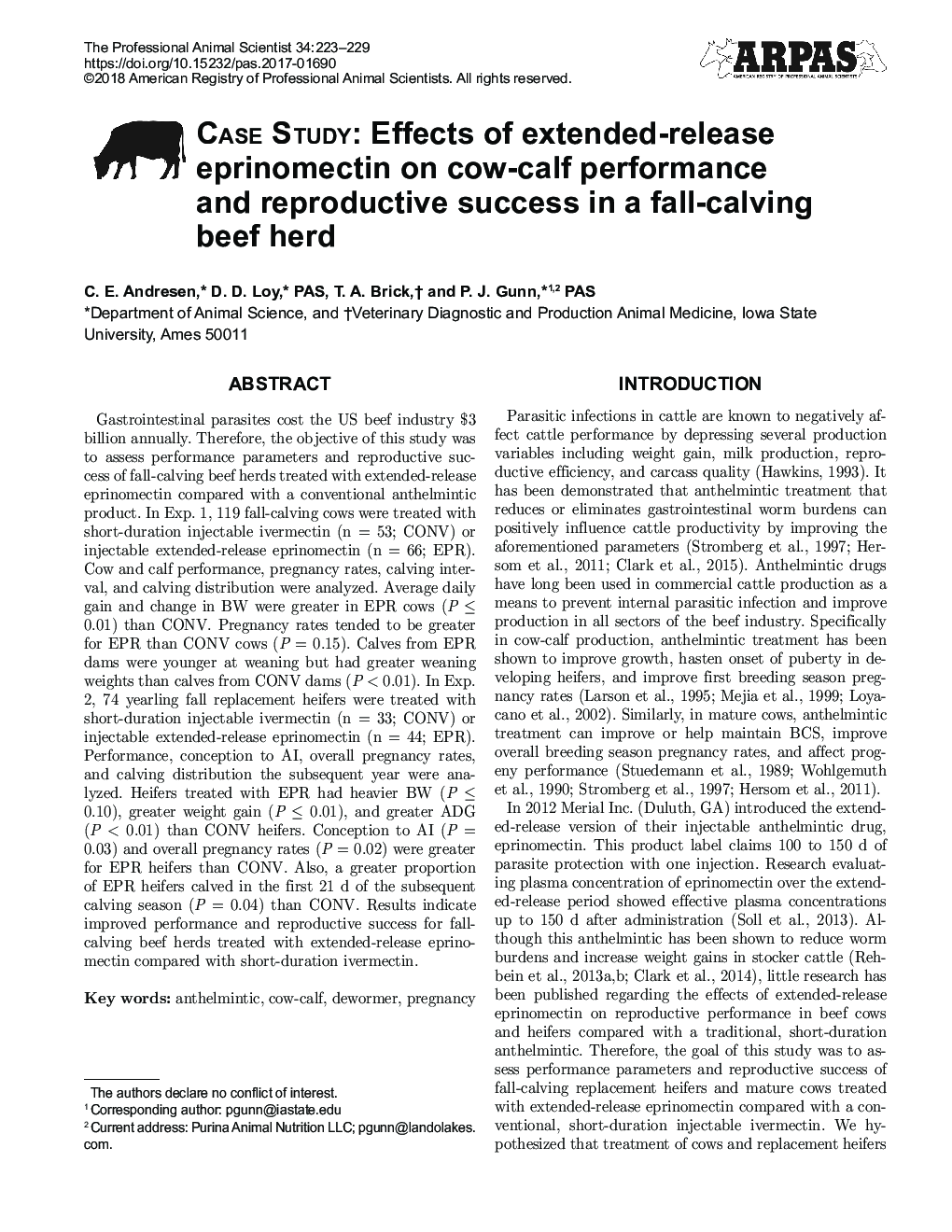| Article ID | Journal | Published Year | Pages | File Type |
|---|---|---|---|---|
| 8503689 | The Professional Animal Scientist | 2018 | 7 Pages |
Abstract
Gastrointestinal parasites cost the US beef industry $3 billion annually. Therefore, the objective of this study was to assess performance parameters and reproductive success of fall-calving beef herds treated with extended-release eprinomectin compared with a conventional anthelmintic product. In Exp. 1, 119 fall-calving cows were treated with short-duration injectable ivermectin (n = 53; CONV) or injectable extended-release eprinomectin (n = 66; EPR). Cow and calf performance, pregnancy rates, calving interval, and calving distribution were analyzed. Average daily gain and change in BW were greater in EPR cows (P ⤠0.01) than CONV. Pregnancy rates tended to be greater for EPR than CONV cows (P = 0.15). Calves from EPR dams were younger at weaning but had greater weaning weights than calves from CONV dams (P < 0.01). In Exp. 2, 74 yearling fall replacement heifers were treated with short-duration injectable ivermectin (n = 33; CONV) or injectable extended-release eprinomectin (n = 44; EPR). Performance, conception to AI, overall pregnancy rates, and calving distribution the subsequent year were analyzed. Heifers treated with EPR had heavier BW (P ⤠0.10), greater weight gain (P ⤠0.01), and greater ADG (P < 0.01) than CONV heifers. Conception to AI (P = 0.03) and overall pregnancy rates (P = 0.02) were greater for EPR heifers than CONV. Also, a greater proportion of EPR heifers calved in the first 21 d of the subsequent calving season (P = 0.04) than CONV. Results indicate improved performance and reproductive success for fall-calving beef herds treated with extended-release eprinomectin compared with short-duration ivermectin.
Keywords
Related Topics
Life Sciences
Agricultural and Biological Sciences
Animal Science and Zoology
Authors
C.E. Andresen, D.D. PAS, T.A. Brick, P.J. PAS,
